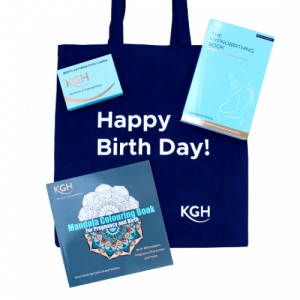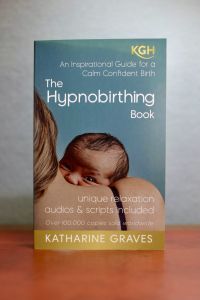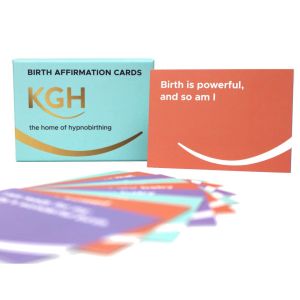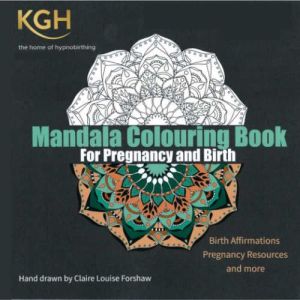
I am writing to say thank you for all of the support and guidance that you provided my husband and I in relation to the birth of our baby son Jake, and also to explain our hypnobirthing experience.
I first came across hypnobirthing when I was on holiday in Sri Lanka about four months into my pregnancy. As I lay there, with time to contemplate what lay ahead, it dawned on me that I was absolutely petrified of giving birth. All of my friends and family had given birth in the “traditional” sense, that is to say, being entirely driven by the advice of the medical profession and taking the maximum amount of drugs on offer to them. A close friend described birth as “medieval”, and my mother in an effort to relax me had said that one would forget all about the terrible experience once it was over and you had a little bundle of joy in your arms.
This didn’t seem to me to be a satisfactory state of affairs. I was 30, well-educated and leading a healthy life style. Surely there was something I could do to get a more positive experience out of something so natural? And it was there, with that thought that my journey towards a hypnobirth began. I spent the next few days watching videos on Youtube on hypnobirthing, with a beach towel over my head so that I could see the screen. The logic seemed to make sense, but I was sceptical about how something so simple could make such a profound difference.
My husband and I chatted about labour and birth over the next week. Unusually it was him who decided to sign us up to the course. Though we were both sceptical about the idea, we agreed to attend with open minds. Our course materials arrived shortly after signing up and we listened to the CD as we were going to bed. Though I am slightly embarrassed to admit that by the time of the course I hadn’t made it through one of the relaxation exercises without nodding off!
We attended St Thomas’ Hospital with about eight or so other couples over two weekends. Having done so, I was utterly convinced. I had been studying for an anatomy and physiology exam at the time, and therefore the explanations about the impact of stress on the body and the muscles of the uterus made particular sense.
From then on I re-thought my plans for birth. My initial plan had been to use the birth centre, with the labour ward nearby as a back-up. The ‘what ifs’ had weighed heavily on my mind. After the course I decided that I only wanted a home-birth. People were surprised (“brave” was the word most frequently used, but my best friend thought the idea “absolutely mental”) that I would opt for a home birth for my first baby, but I reasoned that this was the only place that I could feel truly relaxed. I later also learned that the dedicated midwifery care that one receives when opting for a home birth is by far superior to the snatched fifteen or so minutes that you will be spared on a busy labour ward.
Now, you had told us about the dreaded “due date” and how we become fixated on this as the date nears. I in particular decided to do this because my mother had been induced with me at 42 weeks + 2 days and my grandmother (at a time when inductions were not common place) had had my mother at 43 weeks. Once my due date of 8 August had passed the only question people could ask was “when are they going to induce you?” or “how long will they let you go for?”. If only I had listened when you told us to tell family and friends that there had been a mistake in the calculation of the due date!
I explained to my midwife at my 40 week appointment that I did not wish to have the sweep and that I was not going to be induced at the standard 41weeks +6 days. Surprised, she referred me to the hospital for a plan for monitoring to be put in place. Whilst you had told us about the conveyor belt system of inductions it still came as some surprise to be told in straight terms at the end of my 41 week appointment, “so, all that’s left is for me to book you an appointment for the induction…” It sounded as though I had no choice. Thankfully I had been prepared for this and stated that presumably I had a choice in the matter. The midwife seemed unsure of what could and could not be offered at this stage and asked me to wait to see her supervisor. There then began a long series of appointments with midwifes, doctors and consultants telling me, in very general terms, about the risks of being overdue. I repeatedly had to quote the NICE guidelines, reason about the flaws in the statistics they were quoting, and ask for a system of monitoring to be put in place so that I (and they) could have some assurance that the baby remained happy and that I was not, as had been repeatedly put, putting my baby’s health and life at risk.
From 40 weeks onwards, the due date became an obsession. In the end my husband confiscated my phone because we were being bombarded with texts, emails, whatsapp messages, Facebook messages, calls. It was frustrating to feel that I was doing everything I could to have the best birth for me, and the best birth for my baby, and other people were causing my stress levels to rise. Going underground was one of the most sensible things that I did during those last few weeks.
The system of monitoring that the hospital put in place meant CCG scans, and doppler scans. In the end I was being monitored daily and I felt that people were simply looking for a problem. It felt slightly ironic that to have my minimal intervention birth that I was having extensive medicalisation in those last few weeks, notwithstanding that all had been well and baby was constantly moving. I was devastated then to be told at 42 weeks pregnant that there was some unclear looking amniotic fluid. She said that it wasn’t normal, was most likely meconiam and very bad for baby’s well being, but failed to offer any further opinion and passed me to the midwives and on to a monitoring ante-natal ward. I was then told repeatedly that I should have an induction and that my home birth was out of the question. Two days later we were still in hospital and I was reaching the end of my tether. Had it not been for my husband’s love and guidance, and his reminder of my B.R.A.I.N then I think I would have succumbed to the pressure to have my baby there and then.
Fortunately we had time on our hands. We did some reading of the articles you sent through and I was able to speak to you and the private midwife you recommended about what we had been told. Armed with this we insisted on a further scan and were referred to the fetal medicine expert at the hospital. It transpired that there were a number of reasons why the advice I had been given had not been balanced. Firstly, the clouding was “possibly meconium” not definitely. Secondly, meconium in the waters was not necessarily an indicator of fetal distress (other factors needed to be present, and were missing in my case). Thirdly, it was in fact normal for a baby to have passed some meconium at this stage because of a developed bowel.
After challenging those responsible for my care, my husband told them that he was taking me home. The hospital referred my case to a Supervisor of Midwives, and that is where my experience changed. The Supervisor of Midwives completely understood and was supportive of my decision. To reduce the stress to me she visited me daily in my home environment and we talked through what would happen if my waters broke and they were indicative of fetal distress, and I felt comfortable that I was in safe hands.
At 42 weeks + 4 days I began to get the feeling that labour was under way. Though by the time I was ready for bed things had not progressed significantly and I decided to get some rest. I woke up the following day and the cramps I had felt in my lower abdomen seemed to have stopped. I went for a brisk walk around the block, bought a paper and sat down to watch Bridget Jones’ Diary on the television. By 11am labour was under way. Our midwife had asked that I attend the hospital for a further scan, but my husband told her in straight terms that I could not possibly attend and that if she needed to see me then she should come round. She popped in on her mid-morning break, and then brought her bag in for later. My husband and I then carried on with our day. I baked biscuits and tried to ignore what I thought might be happening. We did a number of relaxations throughout the day and I listened to the positive statements. Then by 5.30pm I was in the birthing pool, focusing on my breathing. As darkness drew near my husband lit candles, put on some wave music and he was with me by the pool as I gave birth.
I remember a midwife asking whether I wanted some gas and air at some point during one of my surges. I refused feeling like this would be an unnecessary distraction. For our whole labour we simply relied on the simple KGHypnobirthing techniques that we had been taught.
Baby came when baby was ready. He weighed 8lb 5oz, and did not look a second “overdue”. One of the midwives remarked that it was one of the most beautiful births that she had ever seen, in terms of the couple working together so well. I put this down to the irreplaceable practice we did before hand. When he emerged into the pool my baby looked like he hadn’t realised he had been born. We had been monitored via an underwater sonic aid during the birth and his heart rate had barely shifted from 140bpm. It remained constant thereafter and his apgar scores were excellent. He went immediately to the breast and fed for about 15 minutes.
The only less positive aspect to my labour came in the third stage, the delivery of the placenta. The midwives had immediately helped me out of the pool after baby was born and were all crouching around me waiting (I had barely noticed them there before). My contractions then stopped. I agreed to have the injection (contrary to my original plan) but still the placenta did not come away. I then needed to go to hospital for a manual removal under general anaesthetic. We left hospital the following day.
Whilst this last stage is not something I would have planned, the positivity I have about the birth of my baby has allowed me to disconnect the two. Part of me suspects that this was just ‘one of those things’, the other suspects that the sudden exposure and change of birthing method may have brought surges too quickly to an end. I will be well-read in future to see whether there is anything we can do to avoid a similar occurrence. For me, the important thing is that my baby was delivered without having any drugs in his system and into such a calm environment. I do not feel as though I want to shut my labour in a box and never think about it again, instead I feel incredibly positive. I recall early on you asking whether labour was “painful or powerful”. For me, it was most definitely the later and I feel proud that we were able to come out of such a difficult last few weeks of pregnancy with memories of such a perfect birth.
If I were to sum up or highlight any tips for hypnobirthing mums to be they would be as follows:
1. LISTEN to Katharine’s advice about the due date – if you can, put your due date back two weeks.
2. Practice is the key to KGHypnobirthing working for you. There is no substitute.
3. Don’t be afraid to challenge medical advice and be sure to ask for time to read up further on issues that present themselves. If the medical profession genuinely think that your baby’s life is imminently at risk then they will tell you so.
4. Try to think through your labour holistically – what will you do in the initial stages, what will you do to cope later on, how do you want to deliver the placenta?
Thank you again for all of your guidance Katharine. It has been invaluable to me and my little family.









